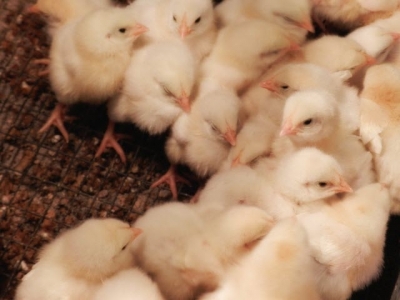Soy protein may have role to play in antibiotic-free poultry production

Antibiotic-free poultry diets may see a boost from enzymatically treated soybean meal in starter feed, says Hamlet Protein.
The Danish company has been working with digestible soy proteins in swine, but is now pushing into the poultry sector, said Scott Moore, president with Hamlet Protein, US at IPPE in Atlanta.
“We recognized the technology had applications in broilers as well,” he said.
While the swine industry has focused efforts on young animal nutrition and understanding gut health issues, young broilers have not had the same amount of focus, said Moore. “That’s the next horizon, as they really look to enhance overall performance, particularly in the absence of antibiotics."
The firm is continuing to research how its soy products can support producers moving away from a reliance on antibiotics in poultry production.
Hamlet Protein is aiming to expand its footprint in North America in 2017, and the company is in the process of running commercial research trials, said Moore.
“As [producers] are looking to pull antibiotics out of the feed, and some are looking at all veggie diets, pulling animal byproducts out, our product has a really good fit there,” he told us.
Enteric health
Offering a diet with improved nutrient access may help establish enteric health in young birds, he said.
In a trial looking at 2,400 broilers raised on an antibiotic and anticoccidial-free diet, those getting 5 or 10% of the soybean meal replaced with the enzymatically treated soybean had improved weight gain and feed conversion ratio, the company reported. With a 5% meal swap, birds had an average of 36g additional end weight, 1g average daily gain improvement and a feed conversion ratio dropped by 0.04.
The treated feed additive acts to inhibit trypsin and oligosaccharides, said Moore. It also has been found to provide a boost to the villi height to crypt depth ratio in bird intestinal tracts, he continued.
“We have three studies that have been completed that are looking at villus,” he said. “We see a statistical difference in improving that in all of our research so clearly there’s a component there.”
R&D innovation is central to the business, he said. “We’re going to look at ways to continue to improve that technology and expand outside of what we’re doing today,” he added.
FeedNavigator is running a free online webinar on poultry gut health on Thursday 2 March 2017. Register now to hear insights from US and European experts.
Related news
Tools

Phối trộn thức ăn chăn nuôi

Pha dung dịch thủy canh

Định mức cho tôm ăn

Phối trộn phân bón NPK

Xác định tỷ lệ tôm sống

Chuyển đổi đơn vị phân bón

Xác định công suất sục khí

Chuyển đổi đơn vị tôm

Tính diện tích nhà kính

Tính thể tích ao



 Research shows enzymes improve energy release for broilers
Research shows enzymes improve energy release for broilers  Can spray-dried plasma boost gut health in young…
Can spray-dried plasma boost gut health in young…